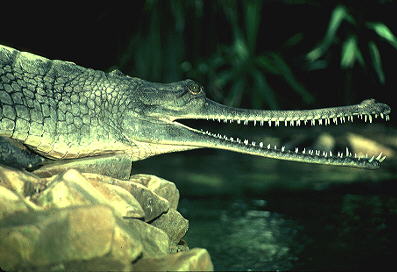 131 gharials, the critically endangered long-snouted crocodile native to the Northern Indian sub-continent, were recently re-introduced to the river Ganges by WWF-India officials.
131 gharials, the critically endangered long-snouted crocodile native to the Northern Indian sub-continent, were recently re-introduced to the river Ganges by WWF-India officials.
The gharials are responding well, according to WWF, since their release on February 12 into the Hastinapur Wildlife Sanctuary in Uttar Pradesh.
“An estimate indicates that barely 1,400 individuals survive in the wild in India,” said Dr Parikshit Gautam, Director, Freshwater & Wetlands Conservation Program, WWF-India. “For its conservation it is essential to locate viable alternative habitats for this species in crisis.”
The target reintroduction area was carefully selected. A female gharial (3.63m) inhabited the area as recently as 1994 while another was rescued there in 2006-07 and released into the Ganges at a spot further up-stream. Furthermore, easily recognizable features of gharial habitat occur in this stretch of the river.
An awareness drive among the local communities was also conducted to ensure community participation in the operation and to reassure people that gharials have never been known to attack humans and feed only on fish.
The presence of the gharials will help maintain the biodiversity of the river and the objectives of the reintroduction will be achieved through people participation and regular monitoring of sections of the river and studying the response of the released gharials in terms of ability to permanently adapt to the environment. Rescue operations will also be carried out if the gharials drift downstream of protected areas.
Immediately below the Hastinapur Wildlife Sanctuary the Ganges River and its environs have been declared as a Ramsar Site and the area is currently the focus of a WWF-India dolphin conservation programme which will also benefit gharial conservation, monitoring and protection.



















